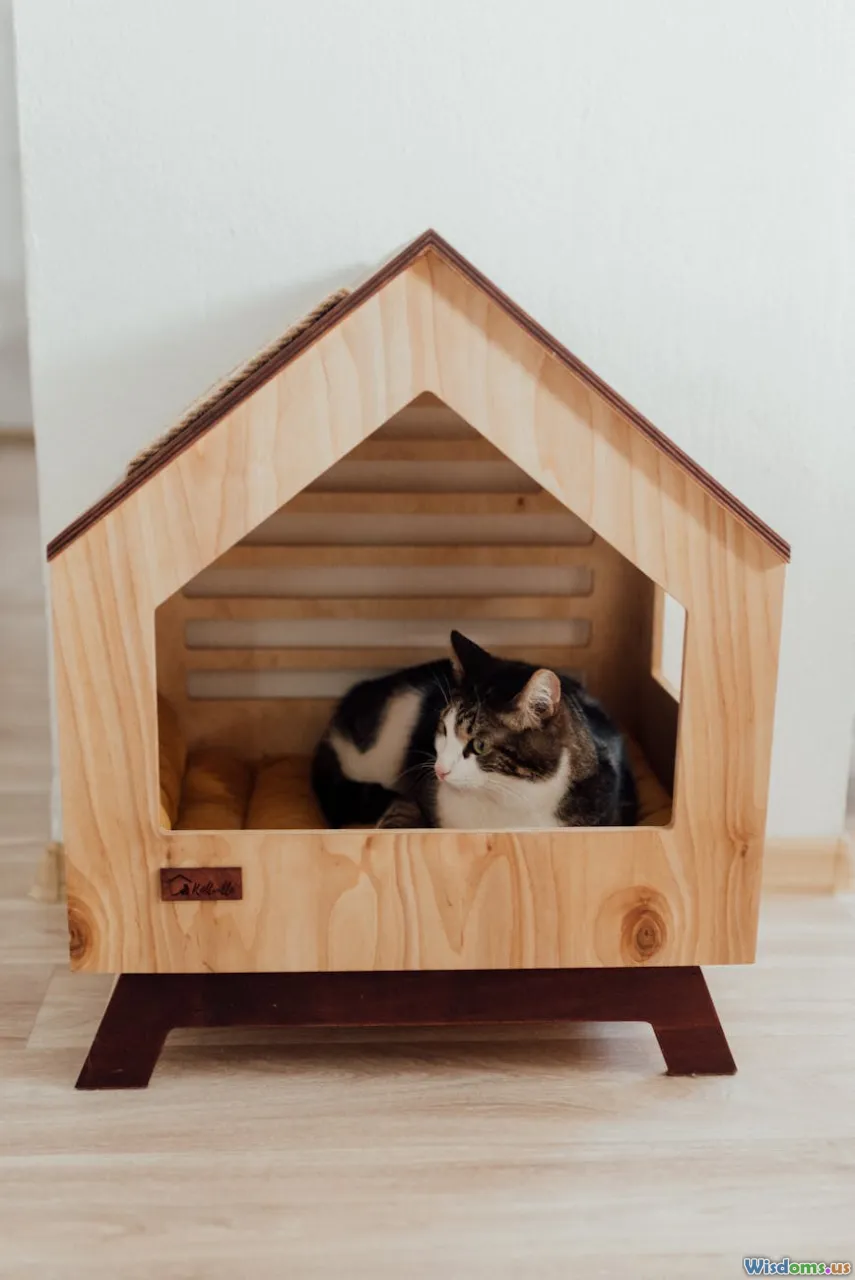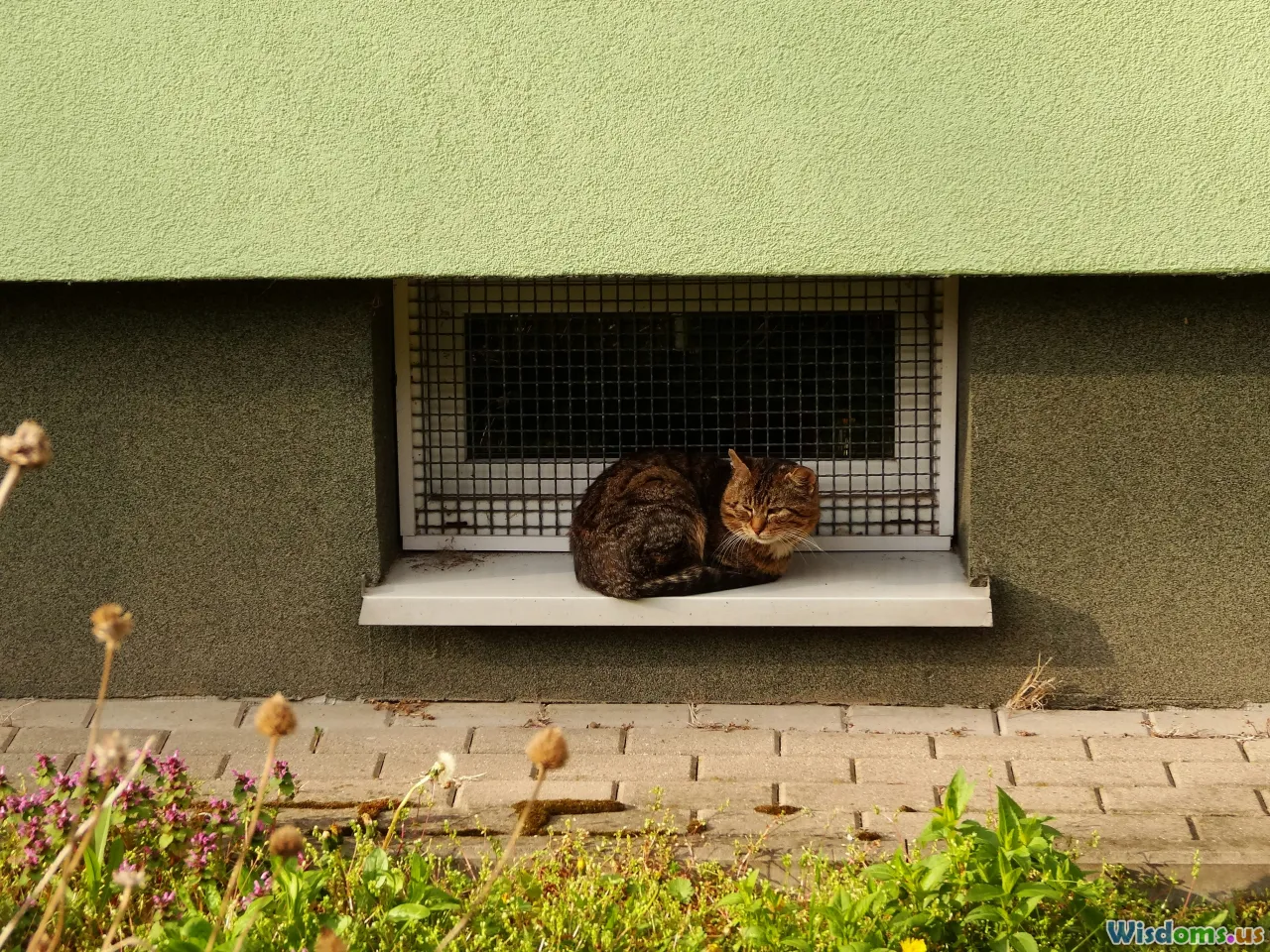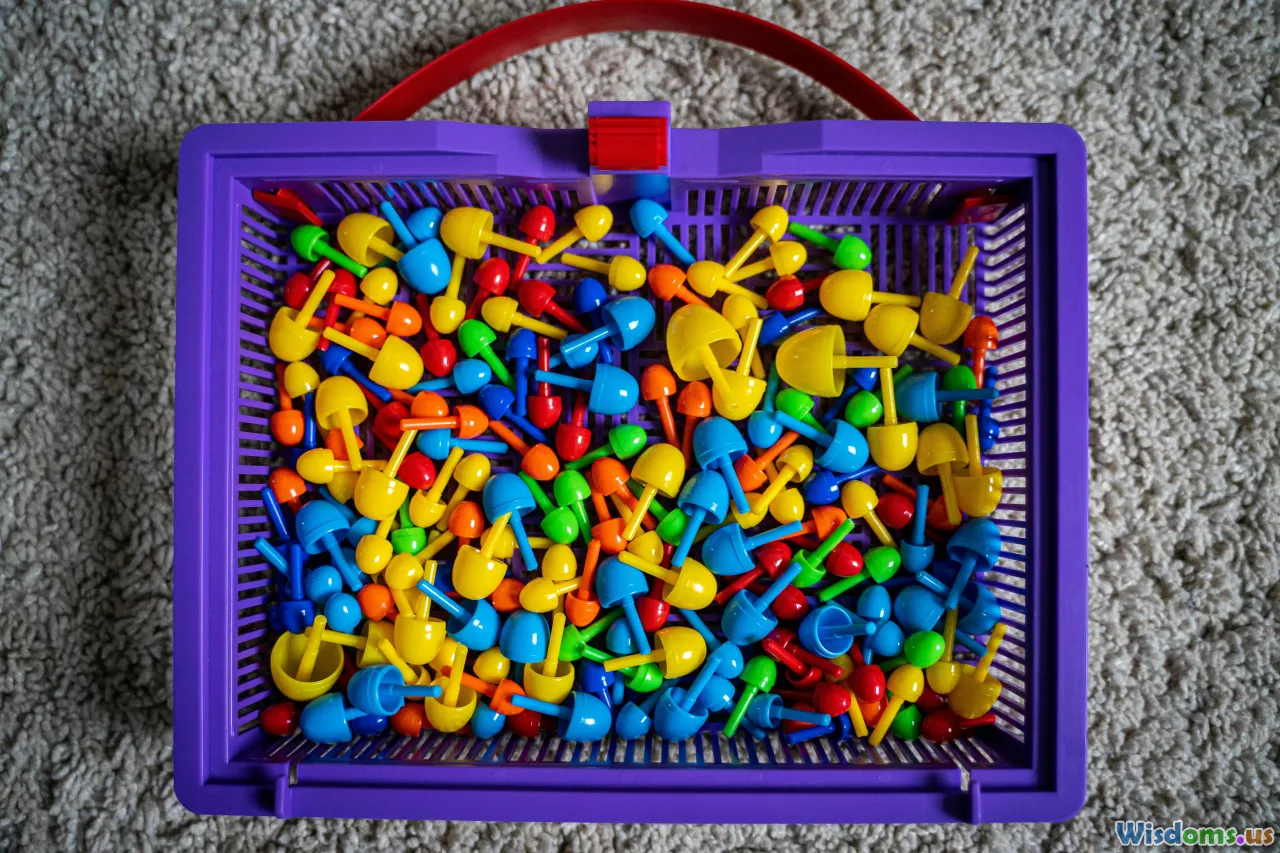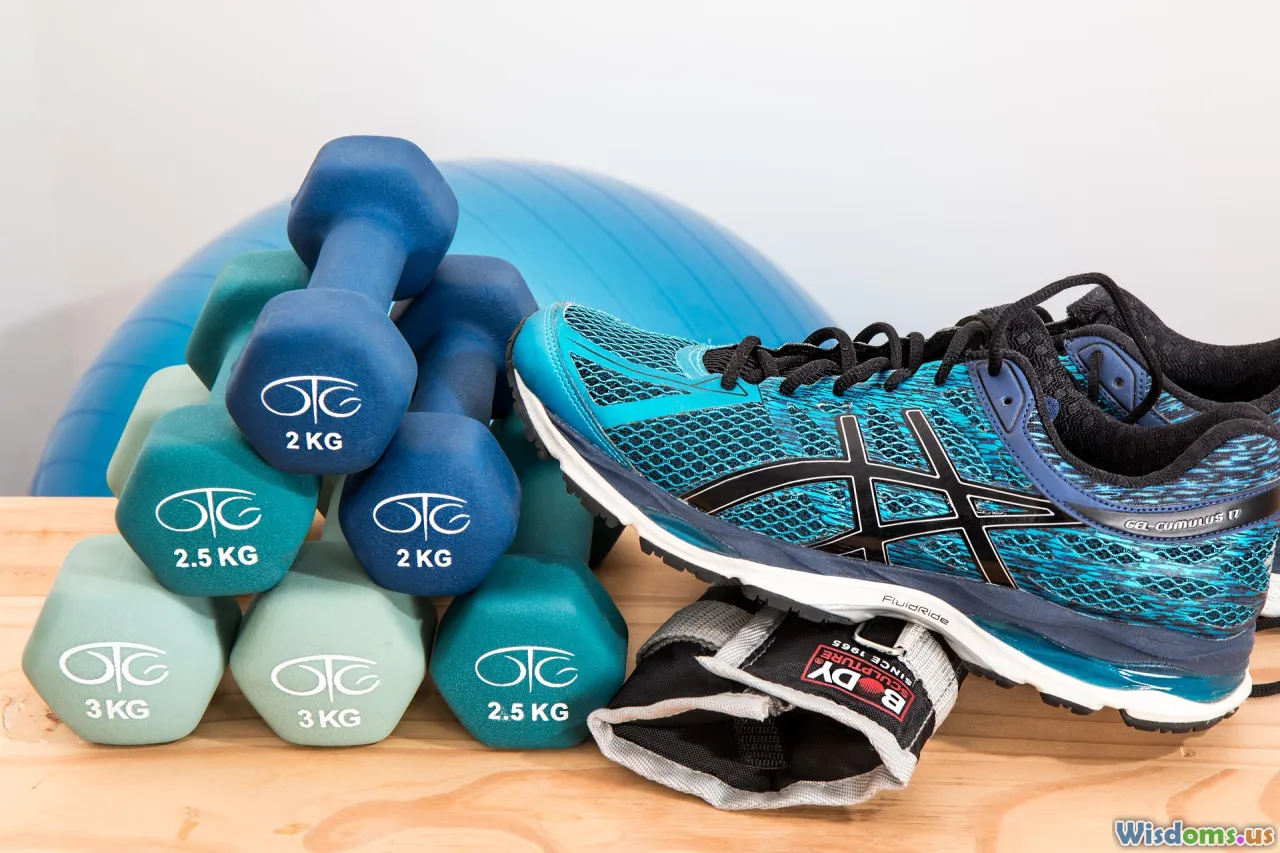
Secrets to Reducing Pet Stress in Animal Shelters
42 min read Actionable, evidence-based strategies to lower pet stress in shelters—covering enrichment, housing, handling, sound control, scent, and volunteer training—to boost welfare, health, and adoption outcomes. (0 Reviews)
Every day in animal shelters, otherwise healthy dogs, cats, and small mammals struggle with a challenge we can’t see at first glance: persistent stress. It alters their sleep, appetite, immune function, and behavior. It can make a laid-back dog bark relentlessly, hide a confident cat behind a litter pan, and turn a friendly rabbit into a rigid statue. The good news is that stress is not a mysterious force. It follows predictable patterns. With a focused strategy, shelters can cut stress quickly and, in doing so, speed up adoptions, reduce illness, and improve safety.
This article shares field-tested, science-informed practices that work in the real world—even when budgets are tight and kennels are full. Whether you’re a shelter director, behavior coordinator, veterinary technician, volunteer lead, or foster, you’ll find practical steps to make your building, your routines, and your interactions actively soothing to animals in your care.
Understanding Shelter Stress: What it is and how it shows up

Shelter stress is the cascade of behavioral and physiological changes that happen when an animal’s environment overwhelms their coping system. In simple terms: loud noises, unfamiliar smells, unpredictable handling, and limited control over daily life can trigger the body’s stress response—raising cortisol and adrenaline, with effects such as heightened arousal, digestive upset, and impaired immune function.
Key signs to watch include:
- Dogs: pacing, spinning, excessive barking, cowering, refusal to eat, lip licking, yawning, pinned ears, tucked tail, dilated pupils, or freezing when approached.
- Cats: hiding, crouched posture, ears flattened, tail held tightly to the body, furrowed brow, panting (a red flag), refusal to use a litter box, reluctance to groom, or avoiding eye contact.
- Small mammals and birds: reduced grooming, refusal to explore, stereotypies (bar biting, head weaving), piloerection, heavy breathing, or refusal to eat.
Useful scales help teams assess quickly and consistently:
- Fear, Anxiety, and Stress (FAS) scale for dogs: a 0–5 gauge used by many Fear Free practitioners; it helps your staff communicate and adjust handling.
- Cat-Stress-Score (Kessler & Turner): a 1–7 scale; higher numbers reflect a more distressed cat posture and behavior.
Two truths frame everything that follows:
- Stress is cumulative. Each small stressor stacks up. Reduce a few, and the whole system calms down.
- Predictability and control are medicine. Routine, choice, and gentle handling can reduce stress even in noisy or crowded facilities.
The first 72 hours: Intake triage and decompression that works

The intake period shapes an animal’s entire shelter experience. The goal: reduce sensory overload, minimize invasive procedures, and create routines that signal safety.
Actionable steps:
- Create a soft-landing intake space. Dimmer, warm-toned lighting; non-slip mats; lightly scented cleaning agents; and soft barriers between kennels. Place cats away from barking dogs and away from drafty doors.
- Limit invasives on day 1. If an animal arrives distressed, delay non-urgent procedures. Microchip and vaccines may be essential, but nail trims, baths, and full behavioral assessments can wait 24–72 hours if the animal is stable.
- Offer immediate comfort. Dogs: a resting mat, chew item, and water within reach; Cats: a hidey box, a towel draped over half the kennel for privacy, and a familiar-smelling cloth if available. For small mammals: a hide, hay right away, and species-appropriate bedding depth.
- Feed promptly and predictably. Small, palatable meals build trust. For dogs that won’t eat, try hand-feeding from a spoon or offering warmed wet food; for cats, gently warm wet food and sprinkle with bonito flakes or cat-safe broths.
- Triage to the right ward. High-FAS cats belong in the quietest room with minimal foot traffic. High-arousal dogs belong in a kennel with visual barriers and reduced stimuli, not facing a busy hallway.
Example: A municipal shelter in the Midwest adjusted intake to add a 20-minute quiet period in low light before handling. In the first month, staff noted fewer bite warnings during exams and a drop in kennel vocalization by late afternoon, suggesting animals weren’t starting their stay in a state of near-panic.
Housing that heals: Kennel and cage design choices that matter

Animals don’t need luxury; they need control, safety, and sensory relief. A few structural changes deliver outsized benefits.
- Double-compartment cat housing. Portaled units allow cats to eat and sleep away from the litter box and enable staff to clean one side while the cat remains in the other. Shelters report improved appetite, cleaner cages, and fewer stress-related upper respiratory infections when portals are used.
- Visual barriers for dogs. Solid panels between kennels and on kennel doors at dog eye level reduce barrier reactivity. Hanging a towel or attaching a half-height privacy panel can cut stimulus exposure dramatically.
- Elevated spaces for cats. A simple cardboard perch or plastic shelf turns a cage into a three-dimensional refuge. Cats resting high show lower stress indicators and approach people more quickly.
- Non-slip, soft surfaces. Foam mats or raised beds in dog kennels reduce fatigue and support restorative sleep. For cats, fleece or plush bedding that holds scent provides comfort.
- Sightline control. Avoid kennels that face each other. If that’s unavoidable, use frosted film or removable panels. Reducing direct eye contact between unfamiliar animals can calm an entire ward.
Budget tip: If portals aren’t feasible immediately, designate a daily cleaning schedule that minimizes moving cats out of their kennels. Use a temporary shield (towel or plastic guard) to reduce visual stress while staff clean.
Turn down the volume: Practical noise control in busy kennels

Shelter noise is a major stressor. Barking can spike sound levels to 100–115 dB during peak times in traditional kennel corridors—well above levels that contribute to stress and potential hearing damage over time. You don’t need a full renovation to make a big dent.
- Add sound-absorbing materials. Acoustic ceiling tiles, fabric-wrapped panels, rubber flooring, and curtains reduce reverberation. If budgets are tight, hang thick moving blankets on strategic walls or cart storage areas during peak hours.
- Use decibel meters. Free or low-cost apps help staff see how changes impact noise. Aim to keep average noise below 85 dB in dog wards whenever possible.
- Stagger routines. Avoid synchronized barking by staggering feeding, cleaning, and walk times so not every kennel door opens at once.
- Reward quiet. Implement a simple protocol: when a dog is quiet for 2 seconds, approach and drop a treat; if barking begins, step away. Within days, many wards get noticeably calmer.
- Provide species-specific music. Studies suggest that reggae and soft rock can reduce stress in kennels; for cats, cat-specific music composed with feline vocal ranges has shown calming effects. Keep volume low and turn off at night.
Example: A shelter outfitted a single 20-kennel corridor with DIY acoustic panels (plywood, insulation, fabric). They also added a waiting zone so volunteers leashed dogs away from the main corridor. Bark averages dropped by roughly 10–15 dB during peak evening times.
Scent, sound, and sight: Multisensory enrichment done right

Multisensory enrichment reduces boredom, provides mental work, and offers animals positive experiences that compete with stress responses.
- Olfactory: For dogs, rotate scent swabs (lavender, vanilla, or clove on a cotton ball placed outside the kennel for short intervals). Use food-based scentwork: scatter low-value kibble in snuffle mats. For cats, offer catnip or silvervine toys twice weekly and switch to valerian if a cat ignores catnip.
- Auditory: Curate playlists at low volume for day hours; maintain quiet or near-silence at night. Avoid constant audio; quiet periods are restorative.
- Visual: Provide partial covers on kennel doors; add simple moving visual interest like a spinning cardboard disc outside a cat’s kennel that can be observed but not startling. Avoid mirrors or other reflective surfaces that can trigger guarding or stalking.
- Tactile and gustatory: Chews appropriate to size and dental status for dogs; licky mats smeared with xylitol-free peanut butter, canned pumpkin, or wet food. For cats, soft fleece to knead and cardboard scratchers. For rabbits and guinea pigs, hay-filled toilet paper rolls and untreated willow chews.
Tip: Keep an enrichment log. Rotate items so novelty stays fresh. Record what each animal engages with so you can tailor future offerings.
Choice and control: Giving animals agency reduces stress fast

One of the fastest ways to reduce stress is to let animals make small choices and earn predictable outcomes.
- Choice in approach. When entering a kennel, turn sideways, crouch, and allow the animal to sniff. Toss treats behind them to encourage a relaxed turn rather than looming overhead.
- Consent cues. Teach dogs a station behavior (place on a mat) where a chin rest earns a pat and a treat; if they lift their head, pause handling. With cats, target training to a perch can be a consent cue for petting.
- Predictable exits. Ask dogs to sit or hand-target before the kennel door opens; reward the behavior and open slowly. Predictability reduces frantic lunging.
- Hiding places. A cardboard box with a side hole for cats allows hiding with partial visibility. Rabbits need a hide with two exits to feel safe.
Example: A shelter added a 60-second 'consent check' during meet-and-greets. Dogs learned that offering a nose target to a visitor’s closed fist yielded a small treat; if the dog disengaged, the visitor stepped back. Adopters reported feeling safer and more connected, and high-arousal dogs settled more quickly.
Human touch done right: Handling and body language that soothe

Handling style can either escalate or soothe. Train every staff member and volunteer to read body language and use low-stress approaches.
- Observe before approaching. Look for tongue flicks, half-moon eye, tucked tail, stiff gait. For cats, note ear angle, tail position, piloerection, and eye dilation. Adjust your plan accordingly.
- Slow is fast. Move deliberately, speak softly, and avoid looming. A side-on body position is less threatening.
- Treat-and-retreat. Toss a treat behind the animal to encourage them to move away and then return on their terms. Repeat to build confidence.
- Handle with tools, not force. Use non-slip mats, towels for cats (burrito or half-wrap), and step-on scales to avoid heavy restraint. Reward every step of care—weights, vaccinations, nail trims—with small food breaks.
- Avoid flooding. If a dog or cat refuses a procedure, stop if it’s not urgent. Re-approach later with a desensitization plan.
Training snippet: Teach a dog 'chin' by capturing a brief chin rest on a rolled towel in exchange for rapid treats. This becomes your cue for calm restraint during exams.
Dogs and cats aren’t the same: Species-specific strategies

Dogs
- Off-kennel time: Aim for 2–3 short outings daily instead of one long session. Scent walks and decompression sniffs can be more calming than high-arousal fetch.
- In-kennel training: Reinforce quiet eye contact, relaxed body postures, and stationing on a mat. Use high-value treats sparingly—small pea-sized pieces.
- Playgroups: For social dogs, small, well-matched playgroups with frequent breaks can meet social needs and reduce frustration. Watch for consent signals; keep sessions short and rotate pairs.
Cats
- Hiding and perching: Every kennel gets a hide and a perch. Offer vertical escapes in rooms.
- Litter box setup: Use unscented litter, a box as long as the cat from nose to base of tail, and keep it in a separate compartment if possible.
- Gentle socialization: Short, quiet visits with soft talking and finger-targeting. Avoid forced handling.
Small mammals and birds
- Rabbits/guinea pigs: Constant hay, hideaways with two exits, soft bedding, and minimal overhead handling. Allow floor-time in a quiet room with tunnels.
- Birds: Quiet perches away from drafts, foraging toys, predictable caretaker routines, and minimal cage invasions.
Better together? When and how to use dog playgroups and cat co-housing

Social housing can soothe some animals and overwhelm others. The secret is thoughtful matching and structured breaks.
For dogs:
- Start with walking parallel. Two handlers, 10–15 feet apart, moving the same direction. Watch for soft bodies, loose tails, and reciprocal interest.
- Use small groups. 2–4 dogs with compatible play styles. End sessions before fatigue; 10–20 minutes can be enough.
- Debrief. Note who relaxed after play and who escalated. Adjust pairings.
For cats:
- Co-housing succeeds when cats have ample vertical space, multiple hides, and resource duplication (litter boxes, food stations, water). Avoid mixing unfamiliar adults unless necessary; introductions should be gradual.
- Monitor for subtle stress: reduced grooming, increased hiding, guarding of resources.
Tip: Keep a 'yellow flag list' of animals who might need solo time. One proactive separation can prevent a week of setbacks.
Food is medicine: Foraging, puzzles, and training as stress relief

Engaging the brain lowers arousal. Food-based enrichment is powerful because it pairs positive reinforcement with mental work.
- Dogs: Snuffle mats, kibble trails in grass, frozen Kongs, and simple scent games (find it) are low-cost and high-value. In-kennel 'open-bar/closed-bar' training teaches that a person approaching predicts treats only when the dog is quiet and calm.
- Cats: Food puzzles, muffin tins with balls hiding treats, and scatter feeding of dry treats encourage natural hunting behavior. Offer small, frequent sessions to avoid overfeeding.
- Rabbits/rodents: Hay-stuffed cardboard, willow balls, and scatter foraging make meals into enrichment.
Training example: A high-arousal adolescent dog learned that each time a person walked by, a treat dropped if he was quiet. Staff counted down from three fingers as they approached so he could predict the treat window. Barking decreased within three days.
Fear-free veterinary care in a shelter environment

Medical care often spikes stress. Even with limited time, implement low-stress veterinary protocols.
- Prepare the space: Non-slip mats on exam tables, warmed towels for cats, and quiet voices only. Keep dogs away from feline smell when possible.
- Pre-visit pharm where appropriate: For severely distressed animals and when medically indicated, discuss use of anxiolytics with a veterinarian. This can transform a terrifying procedure into a manageable one.
- Towel techniques: Cat wraps reduce scratching risk while keeping the cat feeling contained. Reward frequently.
- Cooperative care: Practice nails by pairing a gentle paw squeeze with a lick mat. Build in micro-sessions throughout the week, not just before medical days.
- Record responses: Use quick notes on cage cards. If a dog handles ear touching at FAS 2 but panics at mouth exams, you’ve got a roadmap for the next session.
Measuring what matters: Simple data to track stress and success
You don’t need a research team to measure progress. A handful of metrics can guide decision-making and prove ROI.
- Behavioral: Daily FAS scores for a sample group, bark counts by time of day, number of kennel eliminations (often a stress indicator in dogs), and hide usage in cats. Track changes after interventions.
- Health: Incidence of feline upper respiratory infections, length of stay by species, appetite records, and return-to-shelter rates post-adoption.
- Environment: Average decibel levels at morning, noon, and evening. Light-dark cycles adherence (e.g., lights out by 9 p.m.).
- Adoption journey: Time to first meet-and-greet, number of positive visitor interactions, proportion of animals ready for viewing on day 3 vs day 7.
Create a simple weekly dashboard. Share wins with staff: 'Bark averages dropped 12 dB after installing door covers' or 'Cat URI decreased 30% after portalizing Room B.' Wins fuel buy-in.
Volunteer power: Train and schedule for calm, not chaos

Volunteers are a shelter’s secret weapon. With training and structure, they can reduce stress reliably.
- Standardize scripts. Write brief scripts for kennel approach, treat-and-retreat, and consent cues. Consistency lowers animal uncertainty.
- Right people, right jobs. Assign new volunteers to laundry, dishes, or enrichment packing before animal handling. Graduated access reduces accidents.
- Micro-breaks. Encourage volunteers to give animals short calm periods between activities. Back-to-back high-arousal walks can be counterproductive.
- Train the trainer. Empower advanced volunteers as peer coaches who model body language reading and reward timing.
Scheduling tip: Spread volunteers across the day to avoid mass excitement during one time slot. The goal is a steady stream of short, soothing interactions rather than a daily frenzy.
Technology and tools: Pheromones, lighting, and calming playlists

Evidence on tools varies, but several low-risk options can help when used wisely.
- Pheromones: Dog appeasing pheromone (DAP/Adaptil) and feline facial pheromone analogs (Feliway-type products) may offer modest calming for some animals. Place diffusers near, not inside, kennels and monitor response.
- Lighting: Use warm, indirect lighting in animal spaces and ensure a predictable dark phase at night (10–12 hours). Avoid harsh glare and flicker where possible.
- Music: Curate calming playlists. For dogs, reggae and soft rock have shown positive effects; for cats, consider species-specific music. Keep volume low.
- White noise: A low hum in staff corridors can mask sudden clatters without adding overall volume.
Caution: More isn’t always better. Over-scenting, constant music, and bright lights can become new stressors. Aim for subtle and intermittent.
Helping pets travel well: Transport and adoption events without the meltdown

Movement is stressful. Plan transitions so animals arrive composed, not frantic.
- Crate comfort: Use non-slip mats, absorbent bedding, and partial covers. For cats and small mammals, cover three sides of the carrier.
- Pre-load routine: Offer a bathroom break for dogs, a small pre-trip snack for those who tolerate it, and a brief calm sit before loading.
- Minimize stacking stress: Stagger load times so barking doesn’t escalate. Keep cats and dogs physically separated in transport.
- Adoption events: Create 'quiet pockets'—small tents or enclosed crates with covers where animals can decompress. Rotate dogs for short appearances and give cats a chance to settle before meeting visitors.
Field tip: Bring 'comfort kits' to events—treats, small chew items, licky mats, extra covers, and a portable white-noise machine to mask sudden noises.
Special populations: Neonates, seniors, long-stay, and large-breed dogs

Not all animals have the same stressors.
- Neonates and nursing: Quiet, warm rooms; strict disease control; minimal handling; and rapid transfer to foster when possible. Use soft lighting and white noise to mimic womb conditions for orphaned kittens.
- Seniors: Softer bedding, heat support, shorter walks, and more frequent but gentle touch. Monitor pain—arthritis can masquerade as 'grumpiness.'
- Long-stay dogs: Avoid sensory stagnation. Rotate enrichment, change walking routes, add short off-site field trips, and build a training plan that creates adoptable skills (settle on mat, polite greetings).
- Large-breed dogs: Ensure kennel size permits full stretch and turn. Provide heavy-duty chews and scent-based enrichment to channel energy without over-arousal.
Field trips, day fosters, and sleepovers: Relief valves that change lives

Short breaks from the shelter can reduce stress quickly. Many shelters report that even a two-hour field trip—park sniff, car ride, nap on a couch—can lower arousal and reveal home behaviors that attract adopters.
- Keep it structured: Send a go-bag with a harness, ID, treats, licky mat, and a short guide explaining decompression behaviors and safety.
- Harness calm: Encourage low-key outings—quiet neighborhoods, sniffy walks, and car picnics—over bustling markets or crowded trails.
- Capture stories: Ask fosters to record sleep patterns, appetite, house manners, and favorite activities. These real-life notes are gold for adoption bios.
Busting myths that keep pets stressed

- Myth: A tired dog is a good dog. Reality: Over-exercise increases cortisol. Aim for balanced days with scentwork and rest, not exhaustive fetch marathons.
- Myth: Cats need more stimulation, not hiding spots. Reality: Hides reduce stress and speed up socialization.
- Myth: Loud music masks shelter noise. Reality: Adding more sound rarely helps. Use absorption and predictable quiet periods instead.
- Myth: Any social dog will love playgroups. Reality: Some dogs de-stress with one calm friend or a person. Watch the individual, not the label.
Implementing change: A practical 90-day plan

You don’t have to overhaul everything at once. Start small, measure, expand.
Days 1–30: Quick wins
- Install visual barriers for the noisiest kennels. Hang towels or coroplast half-panels.
- Create intake decompression scripts. Dim lights, offer comfort items, reduce invasives on day 1.
- Train staff on treat-and-retreat and consent cues. Run 15-minute micro-trainings at shift change.
- Add hide boxes and perches for cats. Track appetite and litter usage.
- Begin noise logging with a decibel app at three times per day.
Days 31–60: Scale up
- Portalize one cat room or partner with a donor to fund portal kits.
- Formalize enrichment menus for each species with rotation logs.
- Start dog scentwalks in a designated decompression zone twice daily.
- Pilot playgroups for 4–6 compatible dogs with strict duration limits.
- Launch a weekend day-foster program for long-stay dogs.
Days 61–90: Lock in and measure
- Integrate low-stress handling protocols into medical SOPs.
- Build a weekly dashboard and post it in staff areas.
KPIs to review:
- Cat URI incidence compared to pre-portal baseline.
- Average decibel levels and bark counts.
- Length of stay shifts for long-stay populations.
- Volunteer retention and training compliance.
Cost, ROI, and funding: Make the case for calm

Stress reduction isn’t just humane—it’s financially smart.
- Fewer illnesses: Cat URI and stress-related GI upsets are costly. Lowering stress reduces treatment days and drug spend.
- Shorter stays: Calmer animals show better to adopters. Each day saved reduces food, cleaning, and labor costs.
- Fewer incidents: Lower FAS means fewer bites and scratches, reducing workers’ compensation and liability.
Funding ideas:
- Micro-grants: Many foundations fund enrichment, portals, and volunteer training. Package your project as a health-and-safety initiative.
- Corporate partners: Acoustic panels, lighting upgrades, and materials can be in-kind donations.
- Community drives: Ask for specific items—moving blankets, fleece, cardboard cat houses, licky mats—linked to a clear outcome.
Create a one-page brief with your baseline numbers and expected impact. Donors support measurable wins.
Case snapshots: Real shelters, real changes

- Mid-sized municipal shelter (dogs): Installed visual door covers and added scentwalks twice daily. Within eight weeks, average bark levels dropped by a noticeable margin on decibel logs, kennel accidents declined, and meet-and-greet conversion rates improved.
- Cat rescue (portaled room): Converted 12 single cages with portals. Reported a drop in litter box refusal and a reduction in URI cases over the following quarter.
- Rural shelter (volunteer-led enrichment): Trained volunteers on treat-and-retreat and quiet kennel approaches. A high-arousal adolescent dog who had been overlooked for months was adopted after a series of calm field trips and a newly focused adoption bio highlighting 'car-nap champion' rather than 'needs lots of exercise.'
Daily rhythms and routines: Templates you can adapt

Predictability sends the clearest message of safety. Build day plans that balance activity and rest.
Dogs (weekday sample):
- 7:00–8:30 a.m. Quiet let-outs and sniffy walks; avoid corridor clustering; reward calm re-kenneling.
- 9:00–11:00 a.m. Cleaning while dogs enjoy licky mats or snuffle mats. Keep music low.
- 11:30 a.m. Short in-kennel training: mat settles, eye contact. Two minutes per kennel.
- 12:30–2:00 p.m. Rest period. Lights dimmed, no public tours in dog halls.
- 2:00–3:30 p.m. Playgroups for selected dogs with breaks; others get foraging games.
- 4:00–6:00 p.m. Volunteer walks and adoption meets; staff coach consent cues.
- 8:00 p.m. Final potty breaks and bedding fluff. Lights down; quiet zone.
Cats (weekday sample):
- Morning: Feed, spot clean one side of portaled cages; offer hide/perch checks.
- Midday: Short social sessions with calm talking, target training for those interested.
- Afternoon: Puzzle feeding or scent enrichment; record appetite and litter usage.
- Evening: Lights dimmed, soft ambient sound, minimal cage opening.
Small mammals:
- Rotate foraging toys daily, refresh hides, and schedule hands-off observation time for resting.
A well-timed rest period is often the most powerful stress buster of all.
Communication that calms: Signage and visitor experience

Your adoption floor can be a sanctuary or a stimulus flood. Guide visitors to support calm.
- Clear signs: 'Please pause and toss a treat if I’m calm' on kennels. 'I’m resting; I’ll be ready to visit at 2 p.m.' for cats.
- Visitor pathways: One-way flow reduces bottlenecks and barking. Limit the number of families in a dog corridor at once.
- Staff coaching: Greet visitors with a 60-second primer on reading body language and interacting gently.
Outcome: Visitors who understand what they’re seeing are more likely to connect with a shy pet and less likely to misinterpret stress behaviors as 'bad temperament.'
Training plans that build adoption-ready skills

Animals who can show their best selves get adopted faster. Focus training on low-arousal, high-utility skills.
- Dogs: Hand target, settle on a mat, polite leash walking past kennels, and greeting without jumping. Reward calm, quiet behavior near people.
- Cats: Targeting to a perch, coming forward for a treat, and brief, positive handling sessions. Teach carriers as safe places with food rewards.
- Small mammals: Target sticks for rabbits and gentle hand-feeding to create positive associations without forced handling.
Keep sessions short (1–3 minutes) with more rest than work. Document progress on cage cards so adopters see momentum.
Hygiene without hysteria: Cleaning and disease control that spare the nerves

Cleanliness is non-negotiable, but how you clean matters.
- Reduce moving animals during cleaning. Portaled cat housing allows 'clean one side, cat relaxes on the other.' Dogs can step onto a mat while staff spot clean.
- Use scent-savvy products. Choose low-odor disinfectants compatible with your pathogens of concern. Rinse and dry surfaces thoroughly before reintroducing animals.
- Time your tasks. Avoid cleaning during prime rest blocks. Use soft voices and slow movements.
Result: Better air quality, lower pathogen spread, and less daily upheaval for animals.
Crisis playbook: When intake surges or disasters hit

Stress management matters most when capacity is strained. Create a fast-acting plan.
- Pop-up decompression zones: Convert office space into a quiet ward for high-FAS animals using crates with covers, white noise, and strict 'quiet hours.'
- Prioritize portals and hides for cats; visual barriers for dogs in overflow areas.
- Triage handling: Delay non-urgent grooming and training; focus on feeding, cleaning, and calm contact.
- Communication: Brief twice daily. Assign a noise monitor role and a decompression lead who can call time-outs.
A calm crisis response mitigates behavior regression and fosters staff resilience.
Building a culture of calm: Leadership, language, and longevity

Sustained change lives in culture.
- Lead with language. Replace 'stubborn' with 'over threshold.' Replace 'won’t take treats' with 'needs decompression time and quiet pairing.' Words shape decisions.
- Celebrate small wins. Post 'Stress Down' notes: a shy cat came forward, a dog slept through cleaning, bark counts dipped.
- Train continuously. Make low-stress handling part of every new hire’s onboarding. Refresh quarterly with short skill drills.
When calm becomes the standard, everything else—safety, health, adoption—gets easier.
A shelter can feel like an airport on a holiday weekend, but it doesn’t have to. If you change nothing else this week, dim the lights for a scheduled midday rest hour, add a hide to every cat kennel, and hang a towel over the lower half of dog kennel doors. Then watch. You’ll see shoulders drop, breathing slow, and curiosity return. Stress will always visit, but with the right environment, routines, and handling, it doesn’t have to move in.
Pets & Animals Pet Care Animal Welfare Animal Shelter Management Shelter Management Volunteer Training Behavior & Training shelter enrichment canine stress reduction feline stress reduction fear-free handling kennel design olfactory enrichment noise management adoption outcomes length of stay
Rate the Post
User Reviews
Popular Posts


















